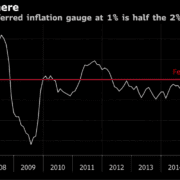Revamped Amusement Parks Increasingly Becoming Profitable Investment Opportunities
US amusement parks are soaring in popularity. Adjusted earnings increased almost 25% to $495 million in the first quarter of 2018, in keeping with an upswing in profitability. Park attendance climbed steadily over the last five years, and operational budgets have scaled alongside attendance. It’s clear that amusement parks are becoming more profitable, but what is the cause? The answer seems to lie in value-add measures that prioritize visitor experience while providing opportunities for additional spending.
Park Expansion
Space is an ever-growing problem for amusement parks, as there never seems to be enough of it. Surging attendance during peak seasons puts strains on parks, due to longer lines and overcrowding. Guest satisfaction begins to drop when wait times become excessively long or when it becomes difficult to move around.
Many parks are currently undergoing expansions to address the problem of limited space. Construction spending in the industry totaled $10.47 billion in 2017, with much of that amount allotted toward land acquisition and infrastructure development. Adding attractions and walkways creates a smoother traffic flow and shortens wait times by dispersing guests among attractions. These expansions are still cost-effective, though, because they allow for more visitors and retail and dining options to drive additional revenue.
Retail
Retail theaters have revitalized brick-and-mortar retail experiences, and the concept is now expanding into many amusement parks. In keeping with other themed attractions, shopping experiences at these parks often contain interactive elements, tech integrations, and performance art. For example, Disney parks offer experiences for purchase such as a princess makeover for little girls. The makeover includes a dress and shoes but also an interactive encounter with a princess character and hair styling. While the dress and shoes could be purchased online, this memorable experience as a whole could not be replicated outside of a retail theater setting.
Further, these experiences aren’t just for kids. Surveys show that 78% of Millennials would rather spend money on an experience than a product. Amusement parks are leveraging this “experience economy” to boost retail sales, and they are seeing fantastic success as a result. For example, Universal Studios Orlando’s Wizarding World of Harry Potter offers an experience in which park-goers are interactively matched with a magic wand, modeled after the popular films. The more expensive wand replicas sold here trigger interactive effects throughout the park, further building upon the experience.
Dining
The experience economy is also driving changes in the way dining options are presented at amusement parks. Themed and interactive dining experiences are increasingly popular, and parks are adapting strategy to accommodate this demand for entertainment. Custom menu items centered around a theme are a huge hit with parkgoers, in part due to their visual appeal. Social media sharing is a powerful organic promotional tool, and photos of food are wildly popular on apps such as Instagram. Posts about dining options excite and attract even more visitors, leading to a snowball effect of increased guest spending and vendor profit.
Lodging and Hotels
Larger theme parks often have resort hotels located on the premises that are huge revenue generators. Hotels are increasingly becoming attractions in and of themselves, and the sky is the limit when it comes to new concepts. Bundling vacation packages that include lodging comes with perks for guests. These packages offer the convenience of a central location, transportation options, and typically on-site entertainment. Suites are often themed, further providing guests with a memorable experience. Parks without on-site lodging are starting to adopt and leverage this trend.
For example, Disney is building a Star Wars-themed hotel to accompany their new Galaxy’s Edge resort in Orlando. The hotel is expected to function as an immersive experience, and the cost of an overnight stay will likely be exorbitant. Still, guests seem willing to pay the price. Resort hotels regularly sell out, showing just how much consumers are willing to spend for a top-of-the-line experience.
Investment Opportunities
The scope of opportunity is wide for investors looking to capitalize on the popularity of amusement parks, either through direct investment in the parks themselves or in local lodging and dining markets that ride the wave of traffic generated by the attractions. The large number of employees required to run the parks also tends to lead to robust local economies, making entire regions more profitable in a variety of market sectors.
Amusement parks are reaping the reward of value-add measures that prioritize guest satisfaction and provide memorable experiences. Their success with these efforts emphasizes the importance of understanding and exceeding consumer expectations.











